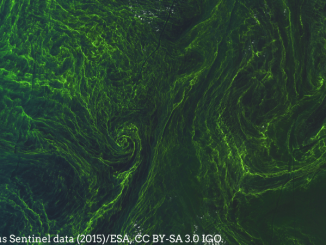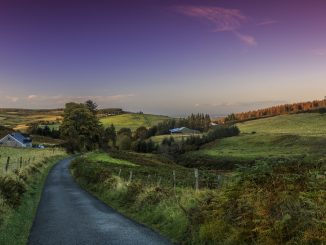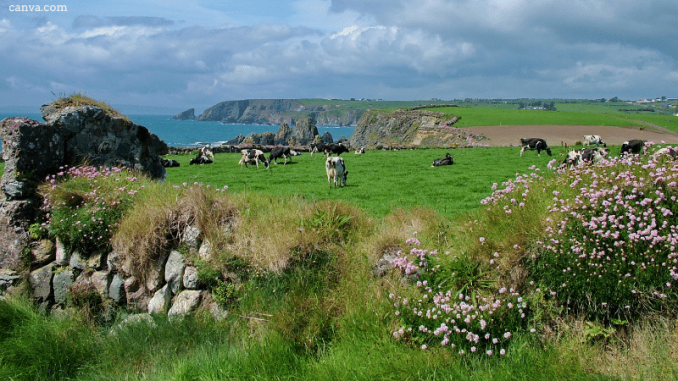
Ireland’s current agri-food strategy places environmental protection and economic competitiveness on an equal footing. But can ambitions for growth be squared with the state’s duty to protect the environment? In the first of a two-part series, Alison Brogan investigates the realities of sustainable growth on the Emerald Isle.
“[E]nvironmental protection and economic competitiveness are equal and complementary: one will not be achieved at the expense of the other” – Food Wise 2025
This is the guiding principle behind Ireland’s industry-led strategy for the agri-food sector, Food Wise 2025. Drafted by the Irish Department of Agriculture, Food and the Marine, the ten-year strategy provides a framework for future projects, and may have significant environmental implications. As such a Strategic Environmental Assessment (SEA) was required.
Read/download the Strategic Environmental Assessment for Foodwise 2025
Part 1 of this series examines Food Wise 2025’s claim of sustainable growth in the light of the Strategic Environmental Assessment and the strategy’s projected effects on biodiversity.
Walk Out – Environmental Pillar Rejects Irish State’s Agri Plan
Background
Agriculture and food production is an integral part of Ireland’s society and economy. Food Wise 2025 describes it as the ‘oldest and largest indigenous industry, deeply embedded in the landscape, history and personality of the country’.
The industry has undergone significant transformation since Ireland joined the European Economic Community in 1973: it is increasingly specialised and dominated by (dairy and beef) cattle and sheep livestock production; predominantly export oriented and characterised by the “productivist paradigm”, focusing on maximising output, often through intensive practices.
The Irish agri-food sector accounts for 7.2% of national Gross Value Added, 8.4% of employment and was an important element in economic recovery after the 2008 financial crisis.
Irish agriculture is also the largest contributor to the country’s overall greenhouse gas (GHG) emissions accounting for 35.3% compared to the EU average of 9.58%.
While recognising the sustainability challenge, Food Wise 2025 advocates for more ambitious growth with an emphasis on dairy which is the most profitable sector at primary production level.
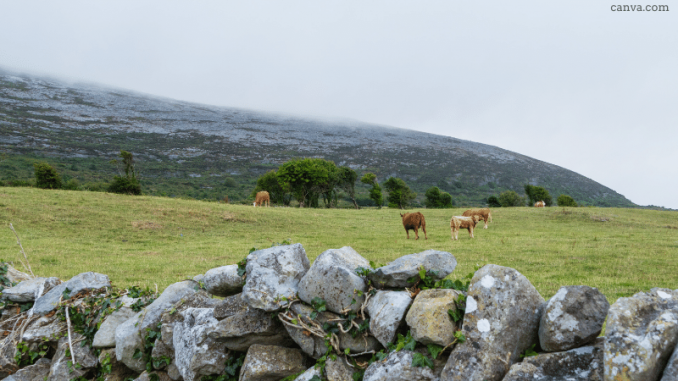
Expanding production
Food Wise 2025 envisages an expanding production scenario, particularly in dairy and seafood and acknowledges that this will make pre-existing environmental challenges greater ‘with increased inputs and competition for limited land and marine resources being key pressures’.
While the strategy does not set out specific proposals for expansion, it does foresee ‘a significant increase in food production’, identifies ambitious growth opportunities across all sub-sectors and specifies targets to increase value for the sector generally:
- An 85% increase in the value of agri-food exports to €19 billion, which entails a ‘substantial increase in exports and value added outputs’
- A 70% increase in the value added in the agri-food, fisheries and wood products sector to more than €13 billion
- A 65% increase in the value of Primary Production to nearly €10 billion
- The creation of an extra 23,000 “direct jobs” in the agri-food sector all along the supply chain ‘from primary production to high value-added product development’.
It is emphasised throughout Food Wise 2025 and its accompanying documents that the projected primary production value increase is not an endorsement of ‘unbridled’ expansion and growth of the dairy herd and milk output.
According to the SEA, the target value is to be pursued through improved market participation, product mix and farm level adoption of already available technologies and changes in the enterprise mix.
The SEA also notes: ‘where mitigation is available (the target of increasing the value of primary production by 65% is to be achieved) possibly by increases in livestock numbers’.
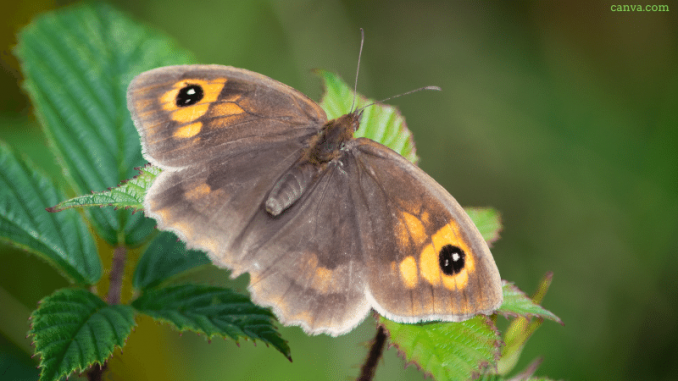
Agriculture and biodiversity
Biodiversity is identified in the SEA as one of the elements of Ireland’s receiving environment liable to be affected by Food Wise 2025.
While much of Ireland’s biodiversity has developed through farmland management, in protected areas the recent trend in biodiversity loss has not been arrested and agriculture remains one of the main threats to protected habitats and species.
Globally, the population of wild species has decreased by 60% over the last 40 years as a result of human activities and one million species are at risk of extinction. Agriculture poses a greater threat to biodiversity than any other human activity through its use and contamination of land and water.
While agricultural intensification is a key driver in biodiversity loss, the agri-food sector is dependent on the ecosystem services that biodiversity provides including soil productivity, pollination, pest predation and water levels and quality.
The transformation of Irish agriculture in the last five decades has seen increased intensity and specialisation of production accompanied by losses of habitats including small wetlands, species-rich grassland and hedgerows. This has had a huge impact on species dependent on extensive or mixed farming such as the corncrake, corn bunting and grey partridge, and insect populations which have also suffered significant losses.
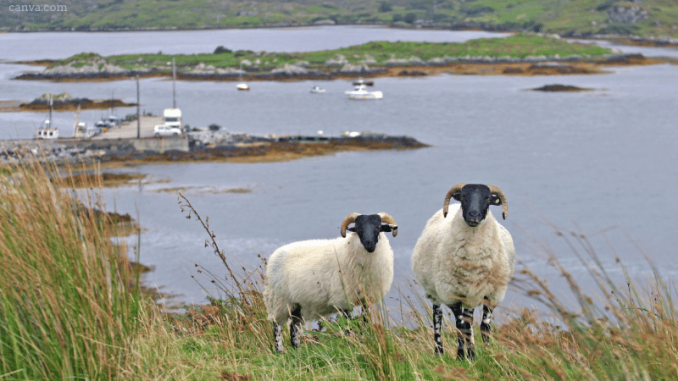
Sustainable intensification
“[F]uture food production systems must be as focused on managing and sustaining our natural resources as they are on production” – Food Wise 2025
According to Food Wise 2025, the key to sustainable production is sustainable intensification as defined below:
“(leveraging) the strengths of the sector by improving productivity while using natural resources in a manner which protects them into the future. This will require the ongoing strong commitment of the sector to adapt through embracing and applying the latest innovations, new technologies and processes” – Food Wise 2025
Food Wise 2025 proposes over 70 sustainability actions, including three actions that directly address biodiversity:
- Developing and enhancing the Origin Green Programme, by improved monitoring and measuring of biodiversity;
- Implementing EU and national environmental measures and prioritising research funding on the sustainability of Irish food production;
- Implementing, maximising and investing in improved monitoring of extant Environmental Programmes relating to habitat preservation including the Water Framework Directive, other agri-environmental measures and research and development initiatives, as they relate to water quality and biodiversity.
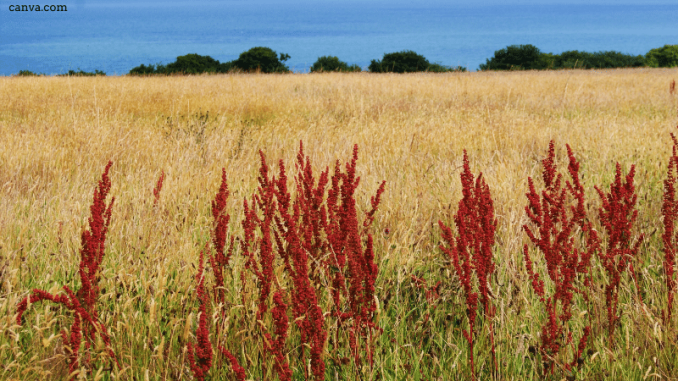
Strategic Environmental Objectives
The SEA sets out a number of Strategic Environmental Objectives (SEOs), which are measures that the environmental impacts of the draft of Food Wise 2025 could be tested against during the policy making process.
Two SEOs directly address biodiversity. The first seeks to avoid impacts on designated habitats and species through compliance with the Habitats Directive (92/43/EEC) and the Birds Directive (2009/147/EC). The second seeks to preserve and improve general biodiversity to ensure compliance with Article 10 of the Habitats Directive.
For both of these SEOs, the indicators are the same: the condition of protected sites, uptake of AES, and maintenance of permanent pasture.
https://twitter.com/wallacemick/status/1369318640353501191
Likely effects on biodiversity
Because Food Wise 2025 sets out desired value increases rather than production output or herd expansion goals, the SEA deemed that growth opportunities and innovation ‘as a result of their uncertainty’ represent only ‘a slight negative effect on biodiversity’. The SEA found that ‘broadly all other actions within Food Wise 2025 are predicted to have an imperceptible or slightly positive effect on biodiversity’ and that ‘further developments of the Origin Green programme will deliver moderately positive effects’.
In addition, the Food Wise 2025 objectives which endorse targeted research and knowledge transfer should also help achieve National Biodiversity Plan objectives including:
- mainstreaming biodiversity across decision making
- strengthening the knowledge base for biodiversity management and protection
- increasing awareness and appreciation of biodiversity
- conserving and restoring biodiversity and ecosystem services
- expanding and improving on the management of protected areas and species
- strengthening the effectiveness of international governance for biodiversity and ecosystem services.
The SEA reports that initiatives under CAP Pillar I will help in promoting biodiversity on tillage farms, and initiatives under the Green Low-Carbon Agri-Environment Scheme (GLAS) will further biodiversity objectives of Food Wise 2025.
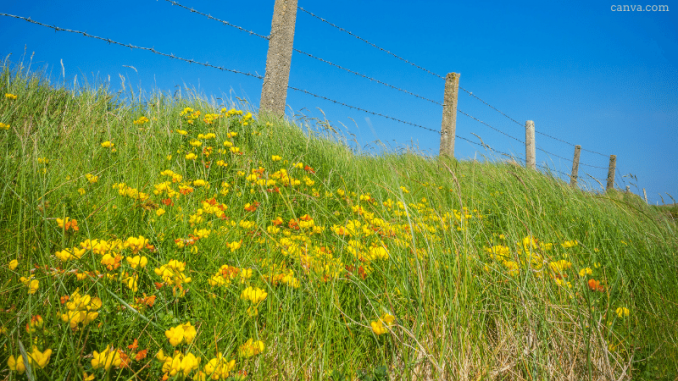
Steps to success
The High Level Implementation Committee (HLIC) has published four annual ‘Steps to Success’ Food Wise 2025 progress reports.
Steps to Success 2016
There is no explicit mention of developments in biodiversity protection in Steps to Success 2016.
Steps to Success 2017
The Department of Agriculture, Food and the Marine’s Rural Development Programme (2014-2020) is identified as the ‘main vehicle for driving sustainable agricultural production in Ireland’. This is concerning considering the budget of the RDP compared to Pillar I. What, then, is the purpose of greening, conditionality and cross-compliance?
Steps to Success 2018
Biodiversity is a main focus of the Steps to Success 2018 sustainability section. It refers to a number of specific initiatives around pollinators and herbicides.
Steps to Success 2018 makes reference to a number of CAP measures that are associated with environmental sustainability. These include European Innovation Partnership (EIP) initiatives and Results-based Agricultural Environment Payments Scheme (RBAPS).
It highlights two EIP initiatives: Biodiversity Regeneration in a Dairying Environment (BRIDE) and Enable Conservation Tillage (ECT). BRIDE focuses on protecting biodiversity particularly on intensively managed farmland.
Steps to Success 2019
In Steps to Success 2019 the section on sustainability includes no direct reference to biodiversity.
Ag-Climatise, a roadmap which will set out the climate challenges that Irish agriculture faces and the opportunities arising therefrom, was initiated on foot of a recommendation to the HLIC from the Food Wise 2025 Environmental Sustainability Committee (ESC).
Indicators
The SEA notes that the ‘Sustainable Growth Scenario’ was selected as the framework within which Food Wise 2025 was to be developed. The selection of the Sustainable Growth Scenario in favour of the ‘Base Case’ and ‘Base Case +’ alternatives:
“imposes responsibilities on the agri-food and marine industry to develop appropriate and effective mitigation strategies to ensure that any increases in primary production can only occur having full regard to Ireland’s national and international obligations specifically in relation to: the maintenance and improvement of biodiversity; the maintenance and improvement of water quality status; and the improvement of air quality including a reduction in GHG emissions.” – Strategic Environmental Assessment (emphasis added)
This decision is translated within Food Wise 2025 to the guiding principle that ‘environmental protection and economic competitiveness will be considered equal and complimentary’ – the claim at the centre of this assessment.
To assess this claim, it is useful to look at two environmental indicators – ammonia emissions and the conservation status of protected grassland habitats – since reliable data is available. Ammonia emissions are discussed in a separate article.
So having established the context, the question remains: has there been an improvement in the conservation status of protected grassland habitats since the inception of Food Wise 2025? This indicator will be examined in part 2 of this series.
Edited by Louise Kelleher
More on Ireland
Walk Out – Environmental Pillar Rejects Irish State’s Agri Plan
Farm-2-Fork 2030: A Truly Green Farming, Food and Rural Vision for Ireland
Farming as its Ferment to be? Korean Natural Farming in Ireland
Rural Dialogues | Stochastic System Collapse Part 2 – the Social and Solidarity Economy Alternative




